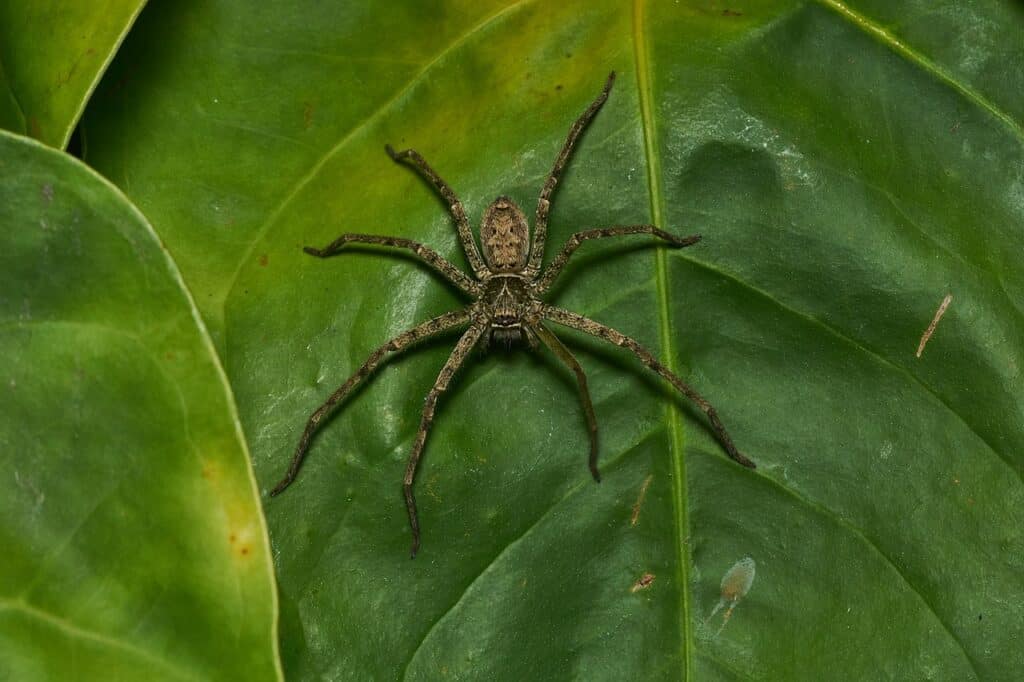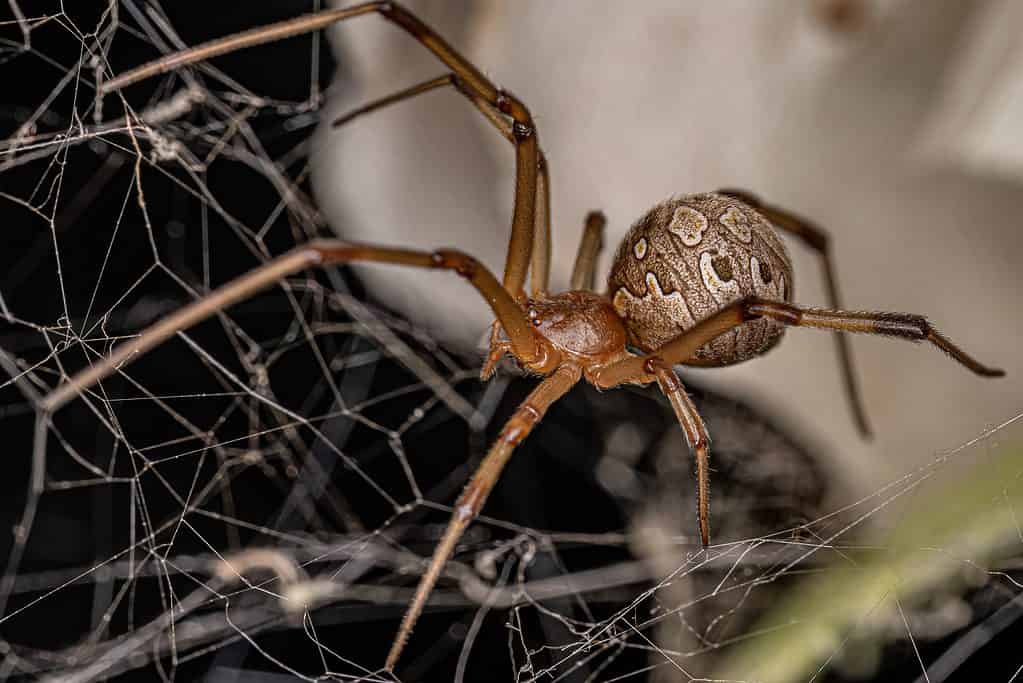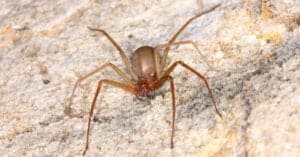Over the last several decades, multiple non-native spiders have begun to appear across Texas. As recently as 2022, there have been sightings of another, recently introduced species that have left some residents of the state concerned. But what is an invasive species, and how might the appearance of these spiders in Texas affect other life in the state?
What Are Invasive Species?
In general, invasive species are those that have established themselves in an environment outside of their normal range. Because they often have no natural predators in the area and are usually well-adapted to their new conditions, these species tend to thrive, overtaking or changing relationships between native residents of the ecosystem.
These plants, animals, or fungi may arrive in their new territory by any means, but oftentimes their arrival is due to human introduction. Once they escape human control and begin to expand from their introduction site, people consider them invasive.
Below, we’ll talk about three species of spiders that have made their way into the United States. We’ll also look at where they take up residence and where you might encounter these spiders in Texas.
1. The Pantropical Huntsman Spider (Heteropoda venatoria)
Huntsman spiders belong to the Sparassidae family, which contains thousands of species that occur across the world’s tropics. Spiders in its family are common across southern Asia, Australia, Africa, and Central and South America. The species that is now common to Texas, Heteropoda venatoria, may have ventured there inside of banana shipments from Central America. It may also have hitched a ride from somewhere in Asia.
Identifying Features
The body of adult huntsman spiders is usually around three-quarters of an inch to an inch in length. Females are larger than males in terms of body size. While the body of the spider is not very big, its overall leg span is much larger. Including their legs, adult huntsman spiders usually measure between 3 and 5 inches in overall size.
The spider is brown in color and has a tan or cream band that runs around the edge its carapace. Both sexes of the spider have very distinct black spots that run down their legs, each of which gives rise to a long, black, bristle-like hair. Males have a dark stripe that runs down the center of the abdomen and a pale area with a light-colored border behind their eyes.
Huntsman spiders do not weave webs in order to catch their prey. Instead, they take to the ground and, as their name suggests, hunt it down on foot. During warmer months, they spend their time outside in trees, around rocks and logs, and in brush or other vegetation. In the cold, they may migrate into crawlspaces, attics, sheds, or anywhere else warm enough to shelter them through the winter.

The pantropical huntsman spider has distinct black markings down its legs and is much larger than the brown recluse.
©© 2017 Jee & Rani Nature Photography / CC BY-SA 4.0 via Wikimedia Commons – Original / License
Are Huntsman Spiders Dangerous?
People commonly mistake the huntsman spider for a large brown recluse. While both spiders are brown, that’s about where the similarities end. Adult huntsman spiders are many times larger than the average brown recluse, which grows to about the size of a U.S. quarter at the upper end. Additionally, brown recluse spiders are solid in color, having only one dark, violin-shaped mark on their back.
While brown recluse spiders can cause some serious damage, huntsman spiders are not dangerous to humans. They do inject venom into their prey once they catch it, but this venom is not enough to seriously harm a human. Unless you’re allergic to its bite, likely the worst things you can expect are localized pain, swelling, and nausea.
2. The Brown Widow (Latrodectus geometricus)
The brown widow spider, not to be confused with the black widow or the brown recluse, is a species of spider belonging to the family Theridiidae. First appearing in Florida in 1935, the spiders likely came to the United States in a shipment from Africa or South America. Since their arrival, they have established themselves in many warm areas across the country and there are now large populations of these spiders in Texas. In some locales, they have caused local extinctions of their Latrodectus relative, the black widow.
Identifying Features
These spiders bear a striking resemblance to the black widow spider. While most of the spiders are light brown, they can also range from white or dark brown to almost black in color. While there are clear distinctions, they are similar in size — between one-quarter and one-half inch — as well patterning. Like their cousins, brown widows also have an hourglass shape on the underside of their abdomens. Rather than red, however, this hourglass is orange or yellow. Although sometimes difficult to see, they also have white markings on their large abdomens.
The spiders are timid and weave webs in dark, tight areas in and around houses, crawlspaces, barns, and along fences. They also appear in between rocks, logs, and under many types of damp cover. Most often, a web will be close to the ground and contain a tunnel into which the spider can retreat from danger. They feed primarily on insects and other spiders.

Female adult brown widow spider of the species Latrodectus geometricus.
©Vinicius R. Souza/Shutterstock.com
Are Brown Widows Dangerous?
While brown widow venom is around twice as potent as that of the black widow, bites from the spider do not induce the same symptoms. Oftentimes, bites from the brown widow are less severe and result primarily in cramping and nausea. This may be due to differing levels of neurotoxins in the spider’s venom.
One reason these spiders are considered invasive is that they attack and kill black widow spiders. In some areas, they have replaced their native counterparts entirely. The reason for this interaction is yet unclear.
While they may indiscriminately attack black widows, these spiders bite humans out of fear and self defense. Although accidental contact may still occur, the best way to prevent bites from these spiders is to take care when venturing into spaces that they may call home. Wearing gloves and long-sleeve clothing when working in dark crawlspaces, attics, barns, and garages is always a good call.
3. The Joro Spider (Trichonephila clavata)
Many Georgia residents first recall seeing the Joro spider in their spring gardens around 2013 or 2014. This unique and beautiful spider is native to Japan and Korea and likely arrived in the United States by way of cargo ship. Since their introduction, their populations in the South and along the east coast are rapidly increasing. These spiders are quick travelers, too — as recently as 2022, photos of the spiders in Texas have appeared on the internet.

The female Joro spider (right) is large and colorful while the male (left) is considerably smaller and inconspicuous.
©iStock.com/LizMinkertJohnson
Identifying Features
The Joro spider is quite large, often reported to be the size of an adult human’s palm. This is pretty accurate, as adults of the species will often display leg spans of 3 to 4 inches in width. While its size is often sensationalized, the spider is comparable in overall size to the aforementioned huntsman spider. Sometimes, they are even smaller.
Females of the species are very colorful, displaying asymmetrical patterning in black, red, yellow, and blue across their abdomens. Their legs are banded along their lengths and are alternately black and yellow or blue. While female Joro spiders are eye-catching, males are primarily brown and inconspicuous.
Like other orbweavers, the Joro spider weaves large, multi-layered, golden webs that may measure up to ten feet across! You’re likely to encounter these spiders in Texas gardens, front and back yards, and along forest edges. They situate their webs between multiple objects, like houses, trees, fences, and bushes, and lie in wait for an unsuspecting meal. Sometimes, groups of them will weave webs close together in the same area.
Incredibly, these large spiders also use their webs to travel in a process called “ballooning”. When a spider balloons, it weaves a parachute out of web material and uses it to catch passing wind currents. Joro spiders can use their webs to carry them through the air across very long distances. Check out the video below to see how ballooning works!
Are Joro Spiders Dangerous?
While the long-term effects of the Joro spider’s interaction with its new environments are unknown, we do know that they are not particularly harmful to humans. The spiders, possessing jaws, are able to bite. They also possess venom that they use when dealing with prey. However, neither of these are strong enough to cause significant harm to people who aren’t allergic.
A Joro spider bite may be painful, but the spiders don’t go out of their way to bite humans. Most often, people are bitten after accidentally walking through the spider’s web. The spider then bites, in fear for its safety. The best way to avoid being bitten by a Joro spider is to pay close attention to your surroundings when outdoors.
Thank you for reading! Have some feedback for us? Contact the AZ Animals editorial team.








